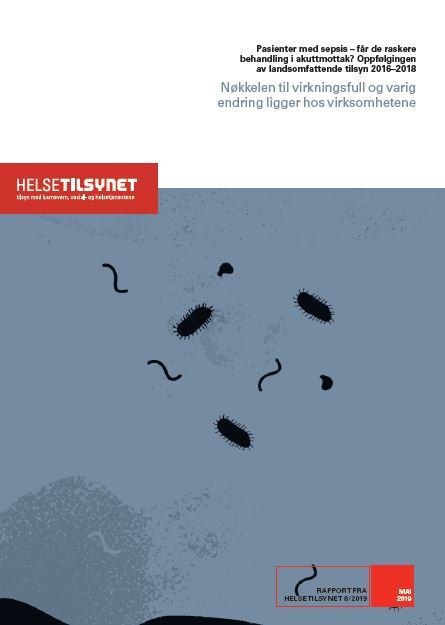Health trusts hold the key to effective and enduring change
Patients with sepsis – are they treated faster in accident and emergency? Follow-up of nationwide supervision 2016–2018
Summary of Report of the Norwegian Board of Health Supervision 8/2019

The nationwide supervision of somatic accident and emergency wards and their diagnosis and treatment of sepsis patients (the sepsis supervision) was carried out during the period 2016 to 2018. The supervision is summarised in Sepsis – ingen tid å miste (Sepsis - no time to lose), Report by the Norwegian Board of Health Supervision 1/2018.
The county governors had identified breaches of the regulations and inadequate patient safety in all the health trusts that were audited. This report sets out the position within the health trusts eight and fourteen months after the supervision visit respectively.
In just over 60 percent of hospitals, results were still unsatisfactory around fourteen months after the visit. However, most health trusts had made solid progress in following up the sepsis supervision to ensure that patients are well cared for in accordance with current guidelines.
In this report, the managers of two hospitals also describe how the trusts approached the follow-up to the findings of the sepsis supervision; how they implemented the necessary changes to safeguard patient safety. Clear and present leadership which welcomes ongoing suggestions for changes by health professionals who interact with patients has been identified as an important factor for success.
Supervision is one of a number of instruments used to ensure that patients and users receive effective and safe care. Different government instruments should be viewed in context.
The actual task of safeguarding patient safety is the responsibility of the health trusts themselves.